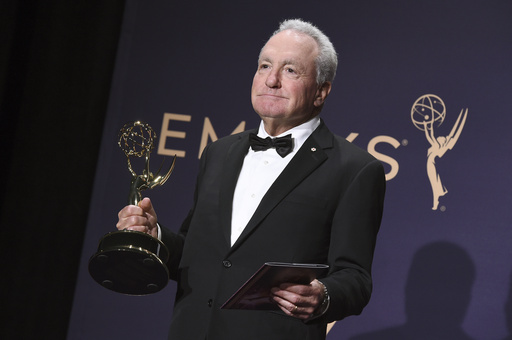
NEW YORK — When the first episode of “Saturday Night Live” premiered on October 11, 1975, viewers may not have anticipated that some signature elements would continue to thrive even after five decades. The initial cold open features John Belushi and Michael O’Donoghue, ending with Chevy Chase walking past their deadpan act, announcing for the first time, “Live from New York, it’s Saturday night!” This classic moment is being revisited as NBC plans to rerun that original episode, accompanied by special anniversary programming throughout the weekend. Events include a three-hour reunion special featuring many former cast members and a livestreamed concert from Radio City Music Hall.
The original cast likely would have poked fun at the display of extravagance—similar to the sneering reactions depicted in last year’s film “Saturday Night,” which portrays the behind-the-scenes antics surrounding the show’s launch. Initially dubbed the Not Ready for Prime Time Players, the troupe has far surpassed those humble beginnings. Today, particularly among viewers younger than 50, “SNL” eclipses almost everything else in NBC’s prime-time offerings, largely due to the current viewing trends toward highlight reels online.
“Saturday Night Live” has been a critical hub for comedy, crafting careers for stars like Belushi, Bill Murray, Eddie Murphy, Adam Sandler, Will Ferrell, Amy Poehler, Kristen Wiig, Kate McKinnon, and Bowen Yang. Moreover, it has generated countless movie franchises and has influenced the late-night comedy landscape, which continues under the guidance of Jimmy Fallon and Seth Meyers. It’s the go-to platform for those seeking comedic commentary on current events.
At the heart of “SNL,” both then and now, is Lorne Michaels. At the start of the show, he was a youthful 30 years old and celebrated his 80th birthday this past fall during a broadcast. After a brief hiatus from the show, he returned in 1985 with a strategy that ensured its ongoing success. He acknowledged, as noted in Susan Morrison’s biography “Lorne: The Man Who Invented Saturday Night Live,” that everyone has a nostalgic affinity for the years they watched the show during their high school days. This understanding calls for a continual influx of fresh talent, which requires making difficult personnel decisions to keep the content culturally relevant.
Michaels also emphasizes the importance of musical guests, even if he’s unfamiliar with their work, as he relies on his team’s advice about which acts are trending. While “SNL” is not without flaws, it encapsulates a fascinating history. According to television historian James Andrew Miller, who co-authored “Live From New York: The Complete, Uncensored History of Saturday Night Live,” the show has its peaks and valleys, resulting in a narrative reminiscent of an EKG—highlighting the uneven but engaging nature of the series.
Long before the word “viral” existed, “SNL” managed to create memorable moments, such as Garrett Morris’ news segment for the hard of hearing, Eddie Murphy’s Gumby sketch, Tina Fey impersonating Sarah Palin, and the infamous cowbell skit. Such highlights overshadow the forgettable sketches or less successful hosts, suggesting that these losses are simply part of the creative process.
The task of producing a new 90-minute episode each week is no easy feat, according to veteran television chronicler Bill Carter, who wrote “The Late Shift: Letterman, Leno, and the Network Battle for the Night.” The relentless clock sets zero margin for error; the show must air regardless of the challenges that arise. This dynamic inherently fuels the excitement and unpredictability associated with “SNL.”
Recent years have seen a greater focus on past moments, with former cast members making regular appearances. Spotting surprise cameos has become a sport among fans. The Five-Timers Club—an amusing concept—walks a fine line between humor and arrogance. With “SNL” seeming to have no end in sight, the speculation regarding Michaels’ eventual departure has intensified, especially as he has begun to take a step back and place trust in the talented team he has cultivated. His ability to make quick decisions in the transition from rehearsal to live performance continues to shine, demonstrating that he still possesses a keen eye for talent and timing.
As the anniversary approaches, discussions about Michaels stepping down have circulated, yet he has maintained a low profile during these festivities. The topic is the focus of a recent article in New York magazine that describes him as a somewhat mysterious and commanding presence. If he were to exit, much speculation circulates around possible successors, including familiar names like Fey and Meyers.
If Michaels chooses to leave, it would undoubtedly create pressure for his successor, especially at a time when traditional television is waning. As Carter notes, it would be unusual for someone to choose to leave something that has been such an integral part of their life. As the show moves forward, viewers can continue to enjoy the ongoing legacy that is “Saturday Night Live.”

